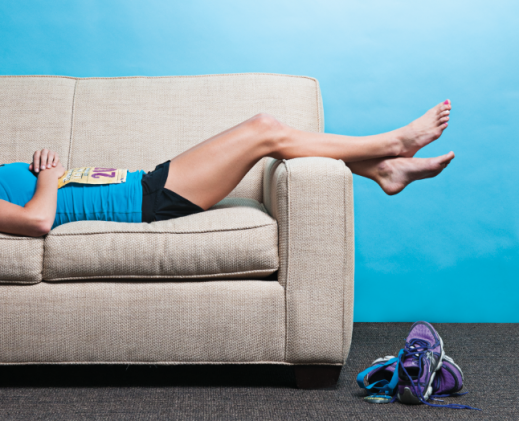Easing Post Exercise Soreness
Have you ever felt sore after doing something rather physical…? Whether you’re a Park Runner, you train in the gym regularly or you run marathons then muscle soreness can build after demanding exercise. It’s normal for this to occur, but It always amazes me when I hear what people do to try & get rid of it - some very sensible stuff and then some ridiculously stupid things!! So today I want to share with you The Physio & Sports Injury Clinic’s top tips for Easing Post Exercise Soreness.
Firstly what is the Soreness you get After Exercise..?
The whole point of exercise is to work/stress your bodies muscle (including your heart!)
When you exercise - the greater the intensity the more you will ‘break down’ layers of muscles - giving you DOMS (delayed onset muscle soreness). Over the next 48hrs the muscle then rebuilds back up, hopefully stronger than it was before. Keep repeating this process over a period of months should, in theory get you stronger (so long as your exercise is always a challenge & you’re pushing the body correctly!)
A lot of people get this soreness feeling following intensive exercise for various reasons including: muscle breakdown, from lactate (lactic acid) building in the muscles (from a lack of oxygen getting to the muscle), from inflammation &/or from the psychological effects of exercise/lifestyle?
So what is the best way to ease post exercise soreness?
There is a whole ‘toolbox’ of things you can try to do to help ease this post-exercise soreness. So here are my top tips:
Sports Massage - I have put this 1 first as I think this is 1 of the best/nicest ways to feel fresh after intensive exercise. There isn’t a sports person on the planet that doesn’t use Sports Massage as part of their exercise recovery routine (after things like gym, races, games, marathons & triathlons etc.) Nothing beats a Sports Massage to flush out any lactate build up, knock back increased muscle tone and generally relax the body after sport. It is very popular here at the Physio & Sports Injury Clinic. Get in touch <here> if you’d like to find out more about our amazing Sports Massages.
Stretching - we featured this in a blog post previously all about stretching (have a read here). Stretching does have its benefits. Who doesn’t like a nice stretch after workout?? The only think to note is if you start to feel ‘full-on’ pain and it’s more than just a normal ache feeling then stretching may not be the answer for you (consult a physio to make sure you haven’t torn/strained something).
Foam Rolling - Foam rollers are still quite popular as a recovery aid - everyone has 1, but who uses them!! WHY? We know scientifically that foam rollers don’t stretch muscle or get rid os scar tissue, but they can help reduce muscle tone and desensitise nerve endings (hence why it often hurts to roll on them!) Unlike Sports Massage you can’t grade the pressure when you roll so it often doesn’t feel that nice to do it to yourself! They’re handy if traveling or on the go and can’t get a sports massage session booked (so they still have a place in people’s recovery but keep it quick (Max 30secs per muscle).
Ice - Ice has been part of the classic response to Injury for many years. Popping a bag of frozen peas on an area of soreness is still advocated to this day. Ice doesn’t do as much as we used to believe but is still great for pain relief.
Compression Garments - these lycra garments of clothing are widely used in professional sport, so you’d think there must be something good about using them. Anecdotally people like using them (+ if you see a famous sports star advertising & wearing them they must be good!!) Surprisingly the scientific evidence for their use on performance and recovery is low quality. So we don’t really know if they are worth using or not! It’s worth noting though that’s theres been no negative reports that they impact recovery which is why they are still an option for recovery.
Hydration - vigorous exercise makes you sweat! (FACT). The average adult will lose approx 1-3L of fluid per hour of exercise. So add up the hours people train when preparing for big events like a marathon or triathlon and you can see why problems occur. Therefore there is a real tendency get dehydrated from physical activity. So replenish your fluids after Sport to get some fluid/salts back into the system. Some sports (rugby) still have a ‘drinking’ culture after a game of the wrong kind! We know consuming alcohol after exercise slows down new tissue/protein growth - meaning less chance of a quick recovery!
Nutrition - this is the big buzz-word at the moment. It’s the 1 area of healthcare that’s always neglected. In the sports world people have looked for various solutions - 1 being whey protein shakes after a workout. Again these shakes has fallen in popularity over the years as we know if you eat/drink sensibly (lean protein e.g chicken/fish &/or plant based) and give yourself enough recovery time to let the body naturally repair muscle between workouts then there is no massive added benefit!
Rest - Rest is not something I always advocate here at the Physio & Sports Injury Clinic. Rest won’t get you fully better after injury in the long run, but sometimes after physical exercise you just need to STOP & listen to your body. Often it gives you warning signs to ease off & take it easier for 24hrs. The human body is a wonderful thing and does some amazing stuff so don’t ignore what it tries to tell you.
So there you have it, my top tips to Ease Soreness after Exercise.
Tel. 01492 545 291


